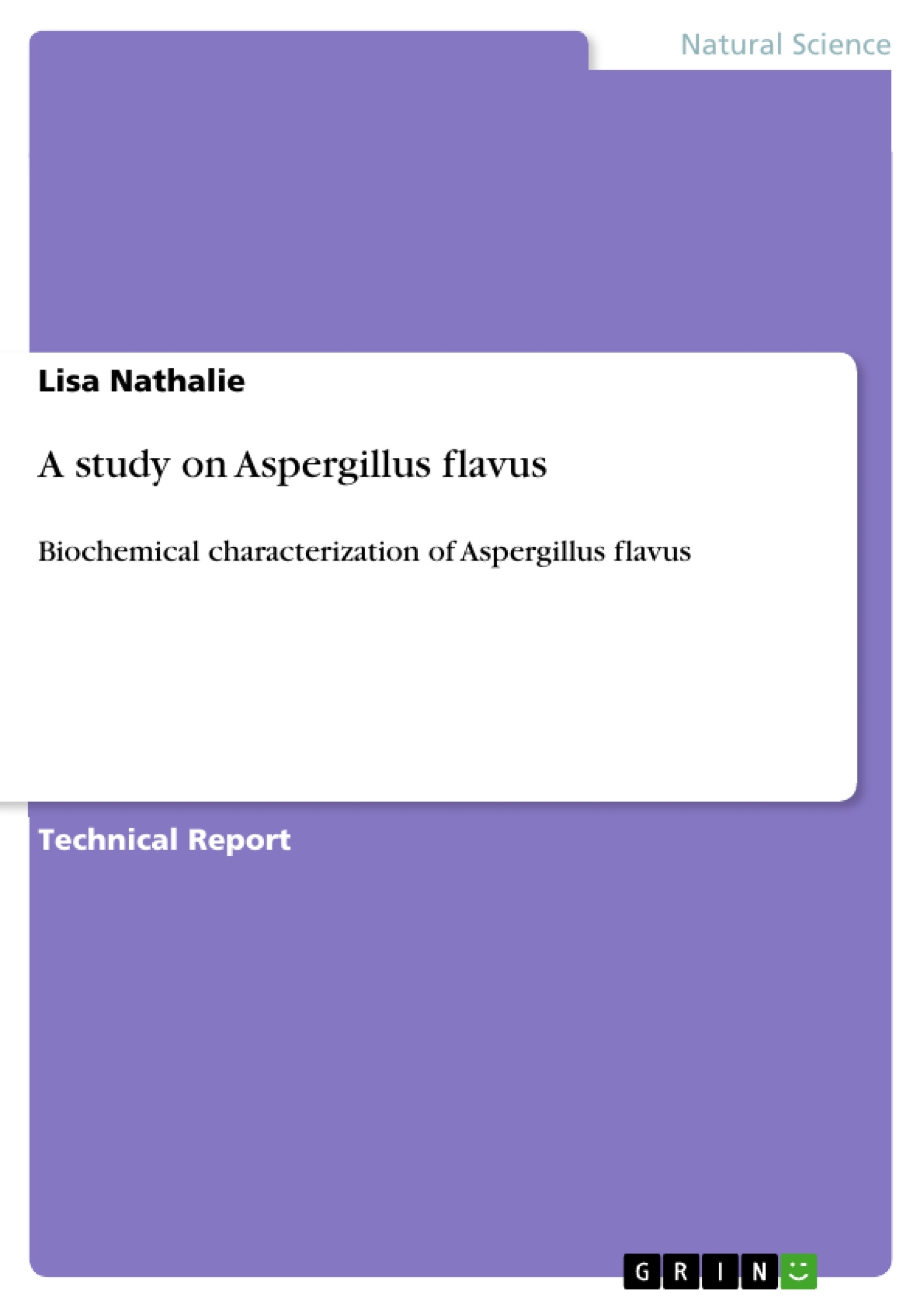Aspergillus flavus is the most widely known species of the genus Aspergillus which is known as a species in 1809 and first reported as a plant pathogen in 1920. Many fungi produce mycotoxin, a toxic secondary metabolite. Most A. flavus produces aflatoxin, a type of mycotoxin that is harmful for human, animal, and plant health. Characterization study of this saprophyte is important for the management of various human, animal, and plant diseases as well for surveillance, and other epidemiological study.
The study focused on 3 subjects, morphological and physiological study, enzyme activity, and aflatoxin production from ground nut seeds collected from all over India. The growth of this fungus was compared in 4 different media for morphological study and in 4 different temperature on PDA media for physiological study. For enzyme activity, amylolytic, proteolytic, lipolytic, cellulolytic, pectinolytic and catalytic activity were determined. The presence of aflatoxin was performed using thin layer chromatography method.
Among 12 isolates, amylase activity was shown by only 12 isolates and there is no clear zone in the remaining 8 isolates. Five isolates did not produce any protease among the 20 tested. Where as 18 isolates were positive for pectin methyl production. In case of lipase, 3 isolates did not show any white precipitation and all other isolates showed white precipitate due to the activity of lipase. Cellulose activity was very low in all the tested isolates and only 2 (AF7 and AF14) isolates exhibited the activity of cellulose in culture plates. Specific activity of catalase was calculated for all the isolates and all the isolates showed varied level of activity. The highest activity (210 mg/ml) was recorded by AF3 isolate and the least activity (1.58 mg/ml) in AF12. Among the 20 of isolates tested, 12 isolates of Aspergillus flavus were toxigenic by fluorescing blue spots for the presence of AFB1/AFB2 or both and 8 isolates.
In summary, morphological, physiological, and biochemical studies are important to identify plant pathogenic fungus such Aspergillus flavus. Aflatoxin, being the widely produced mycotoxin of A. flavus is easily contaminates food and soil, thus its detection is required. Furthermore, by screening the extracellular enzymes activity, one can understand the ability of
particular fungus to produce certain enzymes that have major contribution in biotechnology.
Inhaltsverzeichnis (Table of Contents)
- INTRODUCTION
- MATERIALS AND METHODS
- Aspergillus flavus isolates
- Differentiation of the isolates (aflatoxin study)
- Morphological characterization of A. flavus isolates
- Physiological characterization of A. flavus isolates
- Biochemical characterization of A. flavus isolates
- RESULTS
- DISCUSSIONS
- REFERENCE
Zielsetzung und Themenschwerpunkte (Objectives and Key Themes)
This minor project report aims to conduct a comprehensive biochemical characterization of Aspergillus flavus isolates, focusing on their morphological, physiological, and biochemical characteristics. The study investigates the presence of aflatoxins and explores the diversity among different strains.
- Biochemical characterization of Aspergillus flavus isolates
- Aflatoxin production and its implications
- Morphological and physiological diversity of Aspergillus flavus
- The role of Aspergillus flavus in different environments
- Potential applications and significance of this research
Zusammenfassung der Kapitel (Chapter Summaries)
The "INTRODUCTION" chapter provides a background on Aspergillus flavus, its significance, and the importance of studying its biochemical characteristics. The "MATERIALS AND METHODS" section details the experimental procedures, including the isolation and selection of Aspergillus flavus strains, aflatoxin analysis, morphological characterization, and biochemical assays. The "RESULTS" chapter presents the findings of the study, focusing on the biochemical profiles of the isolates. "DISCUSSIONS" analyzes the results, relating them to previous studies and exploring the implications for understanding the diversity and potential applications of Aspergillus flavus.
Schlüsselwörter (Keywords)
The primary focus of this work lies in understanding the biochemical characteristics of Aspergillus flavus isolates. This includes analyzing aflatoxin production, examining morphological and physiological variations, and exploring the potential applications of this fungal species. Key concepts include biochemical characterization, Aspergillus flavus, aflatoxin, fungal diversity, and biotechnology.
- Quote paper
- Lisa Nathalie (Author), 2011, A study on Aspergillus flavus, Munich, GRIN Verlag, https://www.hausarbeiten.de/document/177288


